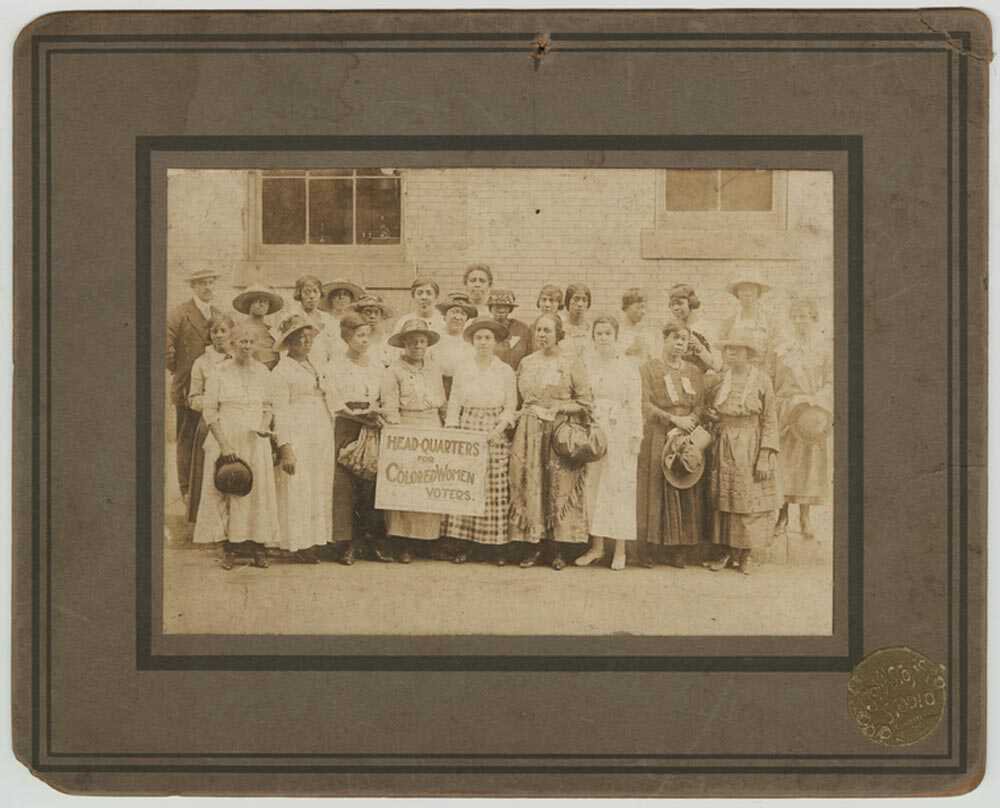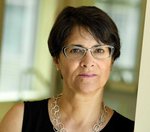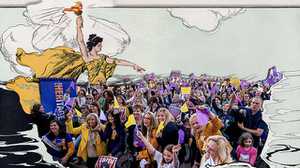Black Women’s 200 Year Fight for the Vote
From the Collections: The African American Experience | Women in American HistoryFor two centuries, black women have linked their ballot access to the human rights of all.

The 100th anniversary of the 19th Amendment is a chance to recover less well-known histories of women and the vote. If we take away little else, the suffrage centennial can teach us how the Black women leaders of 2020 – from Stacey Abrams and Ayanna Pressley to Michelle Obama and Kamala Harris – have emerged out of a centuries-long struggle for political power, in movements led by Black women themselves.
The 1913 women’s parade marked a critical turn in the road to the 19th Amendment. Alice Paul and the Congressional Committee of the National American Woman Suffrage Association (NAWSA) set aside older models of women’s politics that relied upon persuasion, partisanship and patronage. In their place, parade organizers placed confrontation front and center. The women seized the national stage – on the eve of a presidential inauguration no less – and put their bodies on the line in what turned out to be a raucous scene: Suffragists clashed with their critics and the curious for all the nation to see. Behind the scenes, Alice Paul and her collaborators in Washington had inherited the anti-Black racism that had always run through suffrage associations. When given her opportunity to remedy how white supremacy threatened to taint her parade, Paul faltered. She evidenced neither clarity nor conviction and the message to Black suffragists was clear. On March 3, they would not be excluded. Nor however would they be welcomed. A pointed awkwardness ran through the day’s events as a few dozen Black women took their places among thousands of marchers. The women stepped into a new phase of the suffrage movement, but they failed to leave racism behind.
There among the thousands of women marchers were leading Black women like Ida B. Wells, Carrie W. Clifford and Mary Church Terrell. They were joined by teachers, pharmacists, artists and members of the Howard University chapter of the Delta Sigma Theta sorority. These women’s routes to the parade were paved with a distinct struggle over voting rights in America. Black women marchers had not been active in NAWSA. They were not among the many volunteers who supported Alice Paul and NAWSA’s Congressional Committee as they planned for the parade. Black women suffragists arrived that day carrying their independent experiences of conventions, manifestos and organizing. On March 3, 1913, two women’s movements met up. And, as The Vote explains, it was an uneasy occasion.
When I began the research for Vanguard: How Black Women Broke Barriers, Won the Vote, and Insisted on Equality for All, I wanted to learn what was on the minds of those Black women who marched in the 1913 parade. If they hadn’t helped to plan the parade and they never joined NAWSA, where had their commitments to women’s votes taken hold? What sorts of experiences had brought them to the parade? What did they hope to achieve by being there and how did they persist in their commitment to a cause when coalitions with white women suffragists proved to be too strained? I learned that Black women marchers were suffragists so committed to women’s votes that they endured awkwardness and slights on that March day. I also learned that their women’s movement happened elsewhere. The 1913 parade was but one brief chapter in their two-hundred-year long battle for political power. Black women were activists in their own women’s movement, one that aimed to win the vote while also insisting on the defeat of racism and sexism. Their story forever changes how we think about the history of women and the vote.
Black women fought for voting rights, not suffrage. The campaign for the 19th Amendment, often termed women’s suffrage, was one part of Black women’s broader advocacy for the voting rights of all African Americans, women and men. Women like Ida B. Wells came to the 1913 parade as veterans of the fight against lynching. Terrorist-style violence – along with poll taxes, understanding and literacy tests and grandfather clauses – had kept Black men from voting since the 1890s. Wells knew that the same would be true for Black women even if they won a constitutional amendment. In the year that followed the 1913 parade, US senators from the South spearheaded an effort to repeal the 15th Amendment, which in 1870 had prohibited states from using race to deny the vote. Black women watched as lawmakers attempted to trade support for passing a 19th Amendment in exchange for erasing the 15th Amendment. Black women knew they needed both.
Black women rarely worked through suffrage associations. But they always worked to win the vote. Their fight for rights began in the 19th century, with claims to power within anti-slavery societies, churches and political conventions. In these places, women’s striving for power mixed with their interest in building and sustaining community institutions. Black women’s claims for voting rights grew up in the 20th century within civil rights organizations. In 1915, scholar, activist and editor WEB DuBois ran a special issue on “Votes for Women” in the NAACP’s magazine, The Crisis. Twenty-six women and men weighed in, among them Carrie W. Clifford and Mary Church Terrell, both leaders of the National Association of Colored Women (NACW) and marchers in the women’s parade of 1913. The NACW, founded in 1896, and later the National Council of Colored Women, founded in 1935, were the backbone of Black women’s voting rights campaigns. But Black suffragists always made their homes in many sorts of associations: sororities, the professions, college alumnae groups, church conferences and high school faculties.
Black women’s campaign for the vote stretched across 200 years. It began before the women’s convention in 1848 Seneca Falls, New York, and it continued long after ratification of the 19th Amendment in 1920. For Black women, the road to voting rights began in the 1820s and 1830s. Maria Stewart, for example, in 1832 became the first American woman, a Black woman, to speak publicly to audiences of men and women about politics. Her view – that women’s political power should not be limited by either racism or sexism – was adopted by the next generations of Black women activists. For them, the 19th Amendment did not go far enough because anti-Black racism still kept too many Black women from the polls. 1920 marked the start a new chapter in the story of voting rights. Across the country, Black women turned out on registration day and confronted officials in a movement that persisted for another forty-five years. Their victory came 1965 with the signing of the Voting Rights Act. Today, with that law’s most forceful provisions sidelined in 2013 by the U.S. Supreme Court decision in Shelby v. Holder, Black women continue to be champions of voting rights for themselves and for all.
Black women insisted that the vote was a defense against sexual violence. From the memoirs of enslaved women to the #MeToo movement, across 200 years, Black women have linked their access to the ballot to their ability to defend against rape. In her 1861 narrative, Incidents in the Life of a Slave Girl, Harriet Jacobs confessed to how as a girl of 14 she had barely escaped the insistence of the man who headed the household in which she worked. Mary Church Terrell recounted the many occasions on which she was assaulted, threatened and seized by fear when traveling alone on the nation’s railroads. Fannie Lou Hamer, voting rights champion and leader of the Mississippi Freedom Democratic Party, related how the same violence plagued women during the modern civil rights movement. Hamer was sexually assaulted in a Winona, Mississippi, jail after she attempted to register to vote. In 2006, Tarana Burke reintroduced the nation to the link between sexual violence and Black women’s political power with a phrase that launched a movement, “Me Too.” In 2017, the entire nation was drawn into Burke’s way of thinking as men in entertainment, politics, education, industry and more were charged with sexual harassment and assault. If the hashtag activism of #MeToo was new in 2017, the view that women’s political power might protect their privacy and bodily integrity was as old as Black women’s activism.
Black women demanded dignity along with equality, for all humanity. Anna Julia Cooper’s 1892 book, A Voice from the South, was a pathbreaking explication of why Black women aimed to vote, hold office and otherwise wield political power. They aspired to self-governance, free from subordination: “Only the Black woman can say when and where I enter.” They were driven by a quest for dignity that encompassed equality, access and mutual esteem: “The quiet, undisputed dignity of my womanhood.” Black women’s power would not come at the expense of others. Nor would it be won by gamesmanship: “Without violence and without suing or special patronage.” Cooper made plain that her ultimate aim was dignity for both men and women. No one would be left behind. When a Black woman took her seat in a convention or cast her ballot, Cooper explained, “the whole Negro race enter[s] with me.” Black women’s power was a route to dignity for all. In the years after World War II, many Americans would begin to speak in terms of human rights, while Black women had been for generations pegging their work to the needs of all humanity.
One thread runs through these many stories, and it is the view that neither racism nor sexism have a rightful place in American politics. Such differences must be banished from how our nation approaches who votes, who holds office and who determines the law and policy that govern all our lives. The history of Black women and the vote is one about foremothers who set a high bar for the nation – past, present, and future. They have been a vanguard, claiming women’s voting rights and leading by holding our nation to its highest ideals.

Martha S. Jones is a historian and the Society of Black Alumni Presidential Professor and Professor of History at Johns Hopkins University and a co-President of the Berkshire Conference of Women Historians. She is the author of Vanguard: How Black Women Broke Barriers, Won the Vote, and Insisted on Equality for All.







